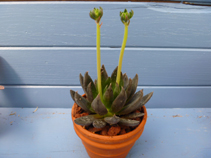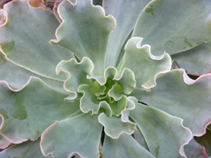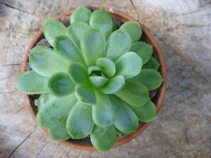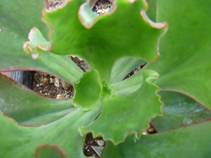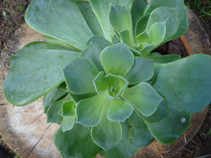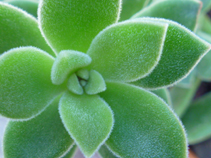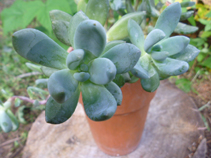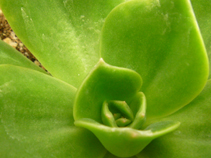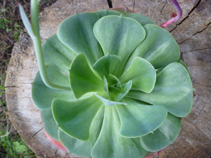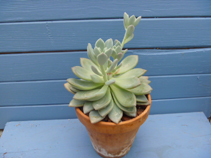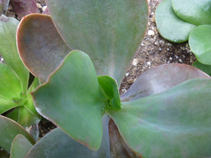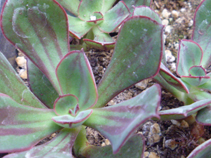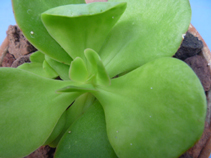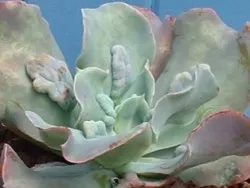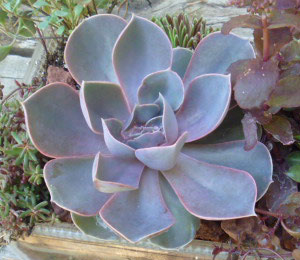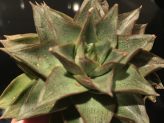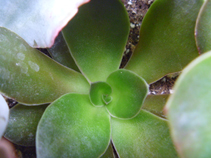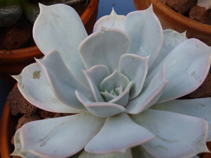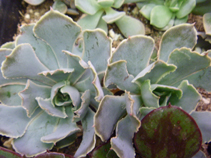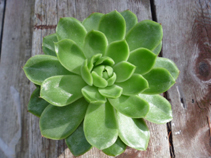Find some favorites here
Many Echeveria find their way into our hearts and plant pots, for very good reason.
This list shows a few of my favorites, and each image links to a dedicated page with more information.
These are all classed as tender succulents, and are not frost hardy. However, their ability to withstand drought is unsurpassed.

Originating in hot desert conditions in Mexico and South America, there are still new species being discovered today.
The hybrids that we know and love are easy to grow and propagate, which only encourages that urge to acquire more.
Watch out, these plants are very addictive.
Once you have a few, there are always more of these lovely plants that will take your fancy.
Click on each of the pictures to go to a page with more information about that Echeveria variety or species.
This group of Echeveria are mixed species and varieties that I’ve grown over the years. Without a good place to overwinter them, sadly I’ve lost many of them, but luckily I took lots of pictures of them for you to enjoy.
These varieties are all gorgeous – it’s hard to choose a favorite. Some are low to the ground rosette forming types, others grow into more shrub like shapes.
All are fascinating and interesting, drought tolerant and lovely throughout the year.
See more about how to grow Echeveria, for the healthiest and happiest plants.
Clicking on each of the pictures takes you to a page dedicated to that kind with more information.
There are many more beautiful Echeveria plants that I’ve never grown, but you can see more pictures below.
They all take similar care, but out of all the different factors, bright light is essential, so don’t bother trying to grow them if you resist the use of a grow light, or don’t have suitable conditions.
Their other requirements are fast draining soil, with a drain hole in the bottom of the pot if you grow them in containers.
They also are not cold hardy, although I have had some tiny plants of various species that could survive if the soil was very dry.
Test them in your conditions, but don’t use your spectacular specimen plants!
Take cuttings, or use a few babies from leaves that fall to see what kind of results you get. How do you do that? Find out here.

Echeveria ‘Afterglow’ showing two different forms of this named variety
In the plant trade, sometimes plants are released that are slightly different from other named varieties. Sometimes it’s because they accidentally seeded themselves into flats of properly named types.
This is why some plants of the same name look different. Without doing DNA testing, it’s impossible to say if they are the same, or a completely different plant.
If you have a plant like this, enjoy it even if it doesn’t have a name.

Echeveria agavoides

Echeveria agavoides

Echeveria ‘Arlie Wright’

Echeveria ‘Black Knight’

Echeveria crested form – mutations occur naturally
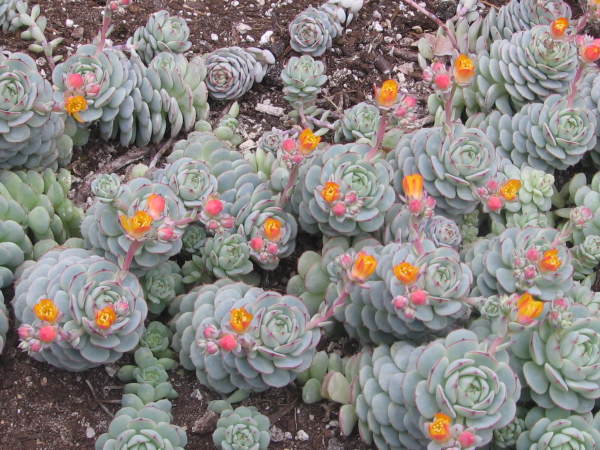
Echeveria derenbergii
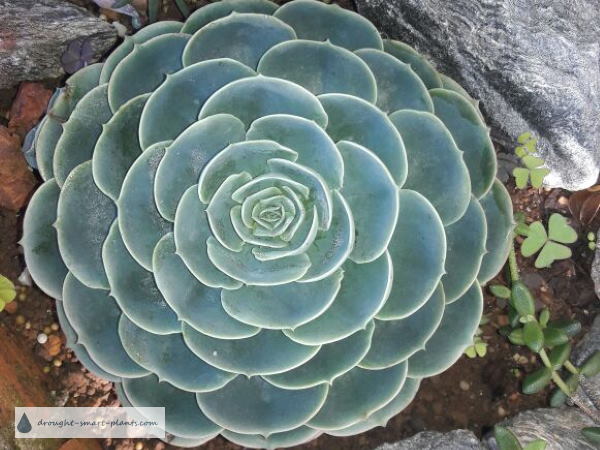
Echeveria imbricata
This list is by no means complete, but it will give you an idea of how huge this genus is. All Echeveria are beautiful, and it’s easy to see why people just have to collect them.
They’re not easy to identify specifically, but they’re easy to spot in a group.
Find out why they’re different from their hardy cousin, Sempervivum, and how to tell them apart.
See more about Echeveria here, and the rest of the list here.



